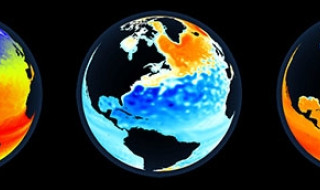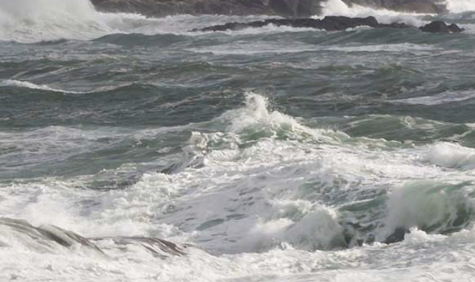"We used to do simulations where 1 year of ocean simulation took about 1 day; we can now do 4 years in 1 day. We want to calculate through about 100 years; we can now do that in 25 days."
The likelihood of extreme sea level rise
Sea levels are rising, but how much and where is subject to debate. Henk Dijkstra (Utrecht University): "We see that the risk of extreme sea level rise in the North Sea region is increasing significantly."
Key facts
Who: Henk Dijkstra
Function: Professor
Organisation: Utrecht University
Service: National supercomputer
Challenge: To investigate how ocean eddies affect regional extremes in sea level rise, with high-resolution ocean models
Solution: With SURF's national supercomputer, researchers can now run four years of ocean simulations per day and quickly store and analyse large amounts of data.

Ocean currents
The eSalsa project began in July 2012 as a collaboration between the Netherlands eScience Center, Vrije Universiteit Amsterdam and Utrecht University. The project investigates regional extremes in sea level, says Dijkstra: "These are determined by currents in the ocean that we call ocean eddies. To calculate the structure of those eddies, you need high-resolution ocean models. With those ocean models, we can look at the changes in the distribution of those eddies in the ocean and the effect they have on sea level rise."
Regional differences
A key question was whether the probability distribution of extreme sea level rise changes. "We look at return times," says Dijkstra: "what is the probability of encountering such an extreme rise in a given period? That yields big differences worldwide. Sea level rise is not homogeneously distributed across the globe. In some areas, such as the Philippines, the sea level is rising very fast, but there are also areas where the sea level is falling. Around the North Sea, too, we see the statistics changing. An extreme rise that used to occur once every 5 years now occurs once a year."
Graphical processors
For the calculations, the project uses the national supercomputer. "Our ocean model has become three or four times faster thanks to the graphics processors, the GPUs," says Dijkstra. "We used to do simulations where a year of ocean simulation took about a day; we can now do four years in one day. We want to calculate through about 100 years; we can now do that in 25 days."
Dijkstra has been with SURF for years: "I can have nothing but praise for that. We get a lot of support, in all respects. Running the models occasionally causes problems with compilers, with data transfers, with performance: that is always solved quickly and neatly. We also make a lot of use of data storage at SURF; a simulation like this easily yields between 10 and 100 terabytes of data. We get online storage at SURF, so we can easily and quickly analyse the data."
Video: The Making of Snellius

